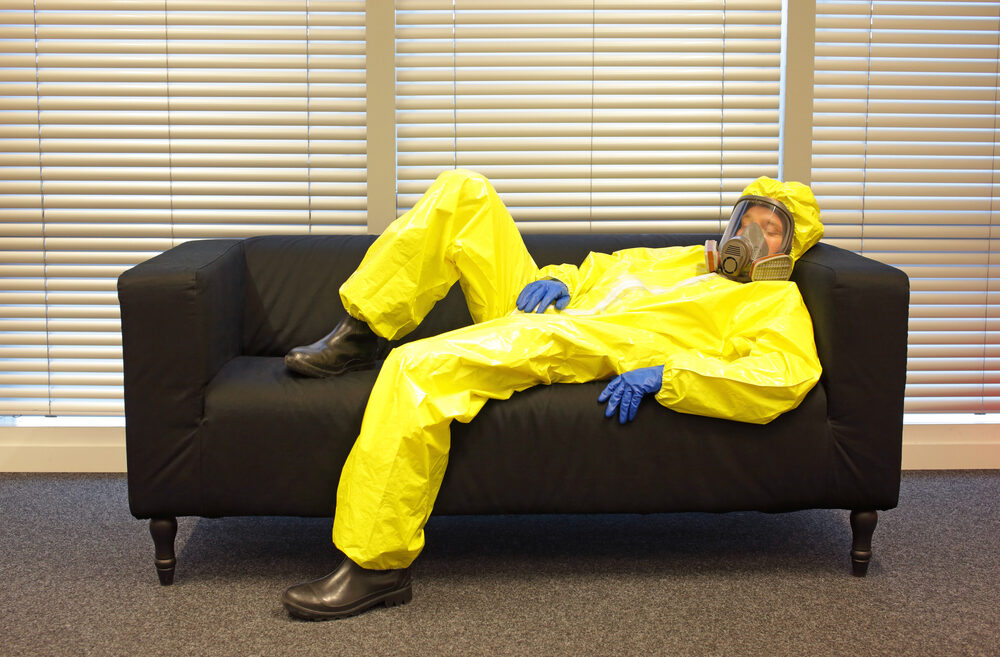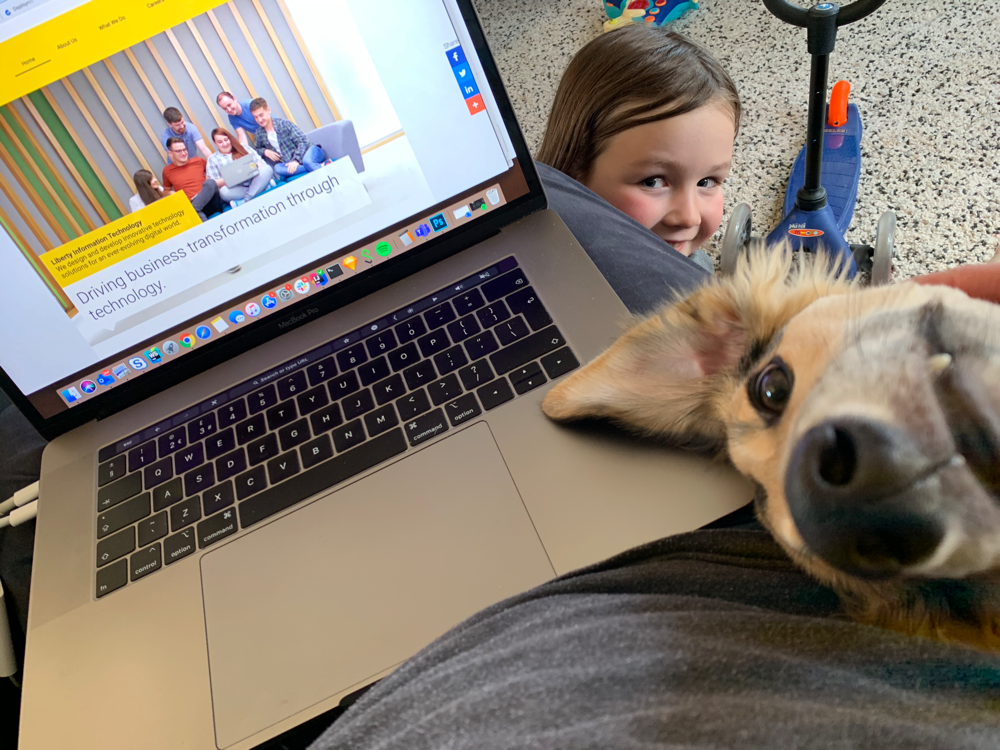
Welcome to WinnerTrick.com — the best source for success and personal development articles, motivational quotes, and tips to live your best life.
contact@winnertrick.com
With the global outbreak of COVID-19 reshaping the way we live, millions of people are now adapting to spending the majority of their time indoors. Daily routines have shifted drastically—homes have become makeshift offices, classrooms, and fitness centers. While staying indoors plays a vital role in slowing the spread of the virus and minimizing exposure, it also introduces new challenges—particularly when it comes to maintaining a balanced, healthy lifestyle. Many people are still navigating this unfamiliar terrain and trying to figure out how to stay mentally and physically well in the process.
Adapting to long periods indoors doesn't mean compromising your well-being. Here are several effective strategies to help you maintain a healthy lifestyle during home confinement:
One of the most important things you can do to safeguard your health is to reduce potential virus transmission inside your home. Anytime you leave the house—whether to pick up groceries or medications—you're potentially exposed to pathogens that can be brought back into your personal environment.
To lower this risk:
Make it a habit to thoroughly wash your hands with soap and water for at least 20 seconds the moment you get back home.
Commit to daily cleaning and disinfecting of frequently touched surfaces, including light switches, door handles, remote controls, sink faucets, and toilet handles.
This practice isn’t just about fighting COVID-19—it’s a great habit that keeps your entire household healthier, even post-pandemic.
If your gym has temporarily closed or you're staying away from public spaces, don't worry—your fitness goals don’t need to be paused. There’s a wide range of simple and effective exercises that can be done right from your living room, often requiring little to no gear at all.
Try incorporating:
Brisk walks around your neighborhood (if local restrictions allow)
Guided yoga or pilates sessions on platforms like YouTube
Classic bodyweight exercises such as lunges, wall sits, push-ups, or planks
Free virtual fitness classes offered by platforms like Tilton Fitness or other online workout hubs
By staying active, you’re not only keeping your body in shape but also improving your mood and reducing stress.
Being home all day with a fully stocked pantry can be a recipe for endless snacking. Without structure, it's easy to overeat or reach for processed foods out of boredom. That’s why having a consistent meal plan becomes even more important during lockdown.
Try to:
Set specific meal times to help regulate your appetite and avoid random grazing
Focus on preparing balanced meals with whole foods
Limit reliance on takeout, which is often high in salt, saturated fat, and refined carbs
Planning ahead doesn’t just help your waistline—it makes your food supply stretch further and keeps you more energized throughout the day.
The emotional toll of a global pandemic can’t be overstated. From constant news updates to social isolation, the stress and anxiety can creep in quickly. It’s important to protect your mental health as much as your physical health.
Here are some helpful habits:
Take intentional breaks from social media and the news cycle
Prioritize quality sleep to support emotional resilience
Use mindfulness tools like deep breathing, guided meditation, or simple journaling
Stay connected with friends and loved ones through video calls or voice chats
Even a short conversation can lift your spirits and remind you that you’re not alone in this experience.
It’s surprisingly easy to forget to drink water when you’re distracted at home. But staying hydrated plays a key role in maintaining immune function and overall vitality. Your body relies on adequate fluids to flush out toxins, regulate temperature, and support organ health.
Simple ways to stay on track:
Use an app to track your daily water intake
Drink a full glass of water before every meal or snack
Enhance plain water with fruit slices or herbs like mint to keep it interesting
Choose water or seltzer over sugary drinks, soda, or coffee
Keep a large refillable bottle near your workspace as a visual reminder

If you believe you’ve been in contact with someone infected by COVID-19 or you start experiencing symptoms yourself, it’s essential to take quick but careful steps to protect both yourself and those around you. Acting early can make a significant difference in stopping the spread and getting the proper care.
If someone in your circle has tested positive for COVID-19 and you've had recent exposure, here’s how you should respond:
Begin by self-isolating immediately and monitor your body closely for any signs of illness.
Common COVID-19 symptoms include:
Fever or chills
Dry cough
Breathing difficulties or shortness of breath
Extreme fatigue
Muscle or body aches
Headaches
Sudden loss of smell or taste
Sore throat
Nasal congestion or runny nose
Upset stomach, including nausea, vomiting, or diarrhea
Avoid touching your face—especially your eyes, nose, and mouth—and keep your hands clean with frequent washing.
Steer clear of all in-person contact for at least 14 days, even if you remain symptom-free, as you could still be contagious during that time.

If you’re developing signs consistent with COVID-19, don’t panic. Instead, take a calm and structured approach:
Before heading to a clinic or hospital, reach out to your healthcare provider or use a telemedicine app to describe your condition. This approach allows doctors to assess your symptoms remotely, reducing the chances of virus exposure to others.
You should also:
Call your primary care physician, if you have one, for an initial assessment.
Contact your local urgent care center to check if they offer over-the-phone screenings or virtual consultations.
This extra step ensures medical staff are prepared for your arrival and can take precautions to minimize risk within the facility.
If you're advised to go to a clinic or emergency facility, make sure to call ahead and let them know when you’re coming. This enables the staff to prepare and take necessary measures to protect themselves and other patients. Most healthcare centers are now operating under stringent guidelines to limit the spread of COVID-19 within their walls.
There are situations where symptoms are too severe to be managed from home or via telehealth. If you're experiencing any of the following, it’s critical to seek emergency medical attention immediately:
Severe difficulty breathing or shortness of breath
Unrelenting chest pressure or pain
Sudden confusion or trouble staying awake
Bluish coloring in lips or face (indicating oxygen deprivation)

Note: These are not the only emergency symptoms. Always consult a healthcare provider if you feel your condition is worsening or concerning in any way.
If your symptoms escalate into a true emergency, call 911 without delay and inform the operator about your suspected COVID-19 status so the EMTs can take proper safety precautions.
If your healthcare provider determines that your case of COVID-19 is mild enough to be managed at home, it’s vital to follow strict isolation protocols. Even mild cases can spread rapidly if proper care isn't taken, especially in shared living spaces.
To minimize the risk of spreading the virus:
Stay inside unless you're seeking medical care, and avoid all non-essential outings.
Do not use public transportation, including buses, taxis, or ride-shares.
Designate a separate room in your home to stay in, and use a separate bathroom if available.
Avoid contact with pets and animals, as the virus could potentially be transmitted through fur or contact.
Wear a mask whenever you're around others, including inside your home, especially in shared areas like hallways or kitchens.
Cover every cough and sneeze using your elbow or a tissue. Immediately dispose of tissues in a lined trash can and wash your hands right after.
Wash your hands frequently and properly—use soap and water for 20 seconds. If your hands aren’t visibly dirty and soap isn’t available, use hand sanitizer with at least 60% alcohol.
Don’t share personal items such as dishes, towels, utensils, or bedding. Wash them thoroughly after each use.
Sanitize high-touch areas daily, including phones, countertops, doorknobs, faucet handles, and light switches. Use disposable gloves when cleaning and a disinfectant approved by the EPA.
The decision to end home isolation should be made in consultation with your doctor and local health authorities. Always follow their guidance carefully.

It's essential to track your condition throughout the recovery period. Monitor your body temperature and check for any new or worsening symptoms. Should your condition deteriorate, contact your physician or health facility without delay.
Avoid rushing to a clinic without warning—call first so the healthcare team can prepare for your arrival and prevent the spread of infection. Continue this daily monitoring for at least 14 days after the initial onset of symptoms or known exposure, even if you start feeling better.
Isolation doesn’t just protect strangers—it safeguards those under the same roof. If you're recovering at home, your loved ones are likely feeling anxious. Help ease their worries and lower the risk by taking the following precautions:
If possible, use both a separate bathroom and bedroom from others in the home.
Limit visitors to those who are absolutely necessary, like healthcare workers.
Let someone else take care of pet responsibilities to reduce transmission risks.
Ensure good ventilation by keeping windows open or using air circulation systems if the weather allows.
If anyone needs to interact with the patient directly, they should wear gloves and a disposable face mask, especially if dealing with bodily fluids such as vomit, saliva, or blood—and discard these items safely after use.
Make sure you enter all the required information, indicated by an asterisk (*). HTML code is not allowed.